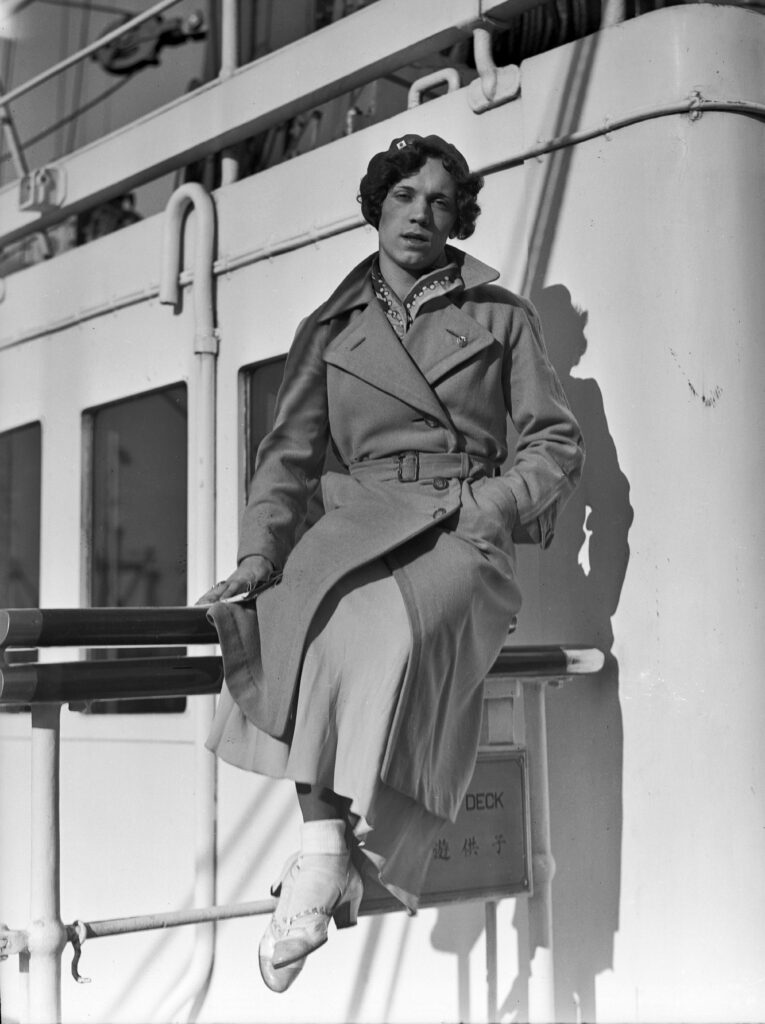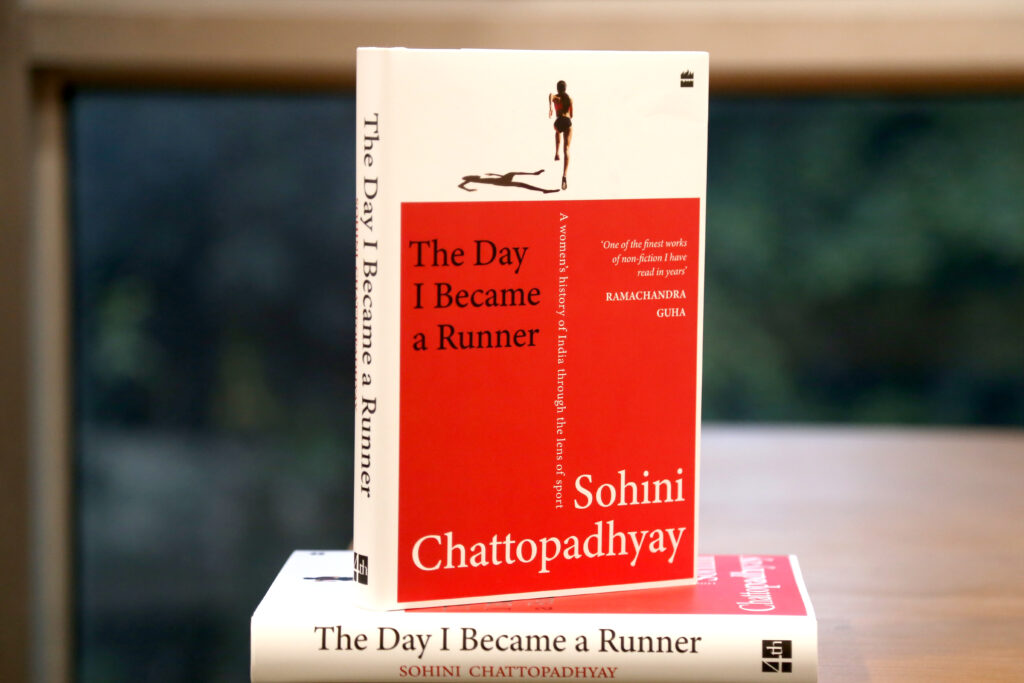The Long and Troubling History of Sex Testing in Sport, a Practice Reserved Exclusively for Female Competitors
Competitive sport has a long and unsettling history of forcing women athletes to prove their womanhood. Compulsory sex testing was introduced at the 1966 European Athletics Championships in Budapest, which required women to walk in the nude before a group of gynaecologists. One reason for this was the suspicion that athletes from one nation in the Soviet Union were strapping up their genitals tightly to sneak into the women’s competition, Alison Carlson has written in the Lancet. Carlson is a founding member of the International Association of Athletics’ Federation’s International Working Group on Gender Verification. But, in fact, the anxiety around biological sex in competitive sport goes back at least to 1936, when a German-Jewish high jumper named Gretel Bergmann was first recalled from Britain to participate in the trials for the Berlin Olympics and then not picked for the German team. Bergmann, who changed her name from Gretel to Margaret in the US and became Lambert by marriage, is the subject of a documentary by the Olympic Channel. The reason Bergmann was called back was said to be a threatened boycott by the US. In truth, it was an elaborate eyewash pulled off by Hitler’s Germany to claim that Jewish athletes were given an equal chance to participate. More interestingly, the athlete who represented Germany at the high jump in the Berlin Games was Dora Ratjen, who was first outed as a man in 1938. Later evidence suggests that Ratjen had ambiguous sexual characteristics.

Long hair, breasts and a vagina were considered proof of femininity. Not surprisingly, the ‘nude parades’ before gynaecologists were criticized and soon replaced by more sophisticated laboratory-based diagnostic tests. The 1968 Mexico Olympics saw the first of two chromosome tests, called the Body Barr Test, which required a cheek swab for a sample of cells. This was based on the notion of a clean binary difference in chromosomes between men and women—that men would test XY for the 23rd (and final pair) of chromosomes, and women XX. The problem was that a whole lot of cases fell between XX and XY.
The most serious challenge to the Body Barr Test was posed by the case of the Spanish hurdler Maria José Martinez-Patino, who passed the test the first time but failed the second time.4 She was barred from competition and her medals were withdrawn. Her boyfriend broke up with her. But Martinez-Patino continued to subject herself to tests to seek answers for herself, and changed our understanding of sex.
It emerged that she possessed testes underneath her labia, and she had no uterus or ovaries. She was diagnosed with a condition called androgen insensitivity syndrome, which meant that her body could not read her male characteristics. In 1996, a new test was devised, which claimed to detect the SRY (sex-determining region Y) gene in the male chromosome (XY), but this wasn’t very effective either.
In 1999, the International Olympic Committee stopped compulsory testing for women. It was decided that athletes would be tested only if suspicion arose. For this, a complaint has to be lodged against the person in question. In 2006, one of India’s greatest middle-distance runners, Santhi Soundarajan, made the news for being the first athlete to fail the test after the era of compulsory sex testing was over. After Santhi, another middle-distance runner named Caster Semenya from South Africa was similarly tested in 2009 and the results of her report leaked by the press, saying she lacked the characteristics of a woman. The South African government, however, supported Semenya and challenged the decision of World Athletics, the body governing international athletics. South Africa chose Semenya to lead the country’s contingent at the 2012 Olympics in London, where she won silver at the 800-metre event. In 2014, Indian sprinter Dutee Chand was said to have failed a test measuring levels of testosterone, which is known as the male hormone in popular parlance. In 2014, the Indian government decided to back Dutee and went to the Court of Arbitration for Sport (CAS), the supreme court of international sport, to challenge the decision that she was ineligible for competition on the basis of her failed test. In 2015, Dutee won her case.
There was nothing to suggest it, but this time, everything would go right. The government agreed to go to court to challenge the rules of hyperandrogenism. This meant going to the CAS. More interestingly, it meant going up against part of the Indian sports administration itself—the AFI, which is a member of the World Athletics. In fact it was the AFI that had conducted the tests on Dutee to check for hyperandrogenism without informing her what they were doing.
This is how it stacked up. On one side stood Dutee Chand, the appellant. On the opposite side stood the AFI, named first respondent, and World Athletics, named second respondent. The costs of Dutee’s case were borne by the Government of India.
Dutee travelled to Lausanne with Mitra for the hearing held over three days, from 23 to 26 March 2015, at the CAS. Eight persons, including Dutee herself, testified in her support. Dutee spoke with the help of an interpreter, who translated her words to English, the language of the case proceedings. World Athletics and the AFI lined up ten persons. Their witnesses included, interestingly, the former Spanish athlete Maria José Martinez-Patino, who was barred from competition in 1985 for testing male in a chromosome test and then thrown out of the Spanish team in 1986. Martinez-Patino suffered from a medical condition called androgen insensitivity, which made her body insensitive to the testosterone it produced. She would find this out on her own expense and initiative after her disqualification.
In 1988, World Athletics (then IAAF) permitted her to compete again, taking note of her medical condition. In this case, however, she argued in favour of hyperandrogenism testing.
World Athletics’s definition of hyperandrogenism is that it is a condition where a female athlete tests in excess of 10 nanomoles of testosterone per litre of blood. The ‘normal’ female range is 0.3–2.4 nmol/l, and the male range is 9.2–31.8 nmol/l with minor variations.10 But hyperandrogenism is solely a female condition. There is no upper limit defined for testosterone levels in men, and hence men cannot be deemed hyperandrogenic. Naturally, the levels found by such tests on athletes are confidential. All we know is that Dutee’s results had showed hyperandrogenism by the World Athletics definition. Dutee put forth three arguments. First, the definition that a female athlete with a natural testosterone level above 10 nanomole per litre is hyperandrogenic is discriminatory, her lawyers argued, because male athletes have no ceiling or maximum level defined for endogenous testosterone. Second, why is the naturally produced level of testosterone considered an unfair advantage but not the height of an exceptionally tall athlete, or the prosperity and superior facilities that an athlete from a wealthy country trains in vis-a-vis an athlete from the Global South? Why are those not disqualifiers? Third, high levels of testosterone are not sufficient for winning performances; her side argued that scientific evidence does not back the importance World Athletics has attached to testosterone.
World Athletics (and the AFI) failed to answer why male athletes do not have a ceiling cut-off for testosterone. Consequently, the CAS panel agreed with Dutee that the hyperandrogenism category for women was discriminatory.
The central argument, which takes up much of the 161-page ruling, however, concerns the science that looks at testosterone. Do we have the evidence to say that testosterone alone powers champion performances? Elite sport requires supreme strength, remarkable stamina, extraordinary physique and astonishing levels of training, not to speak of mental strength. Is a naturally high level of testosterone a bigger factor than a tall athlete’s large stride in her sprint or the cutting-edge training facilities of a wealthy country?
Can the strength and stamina that track and field sports require be zeroed down to just this one hormone? If we are singling out testosterone in a competition of extraordinariness, do we know how extraordinary it is in numerical terms?
To a certain extent, we do. The CAS panel agreed with World Athletics that naturally occurring testosterone was a significant factor in athletic performance because higher levels of testosterone in men led to higher lean body mass (LBM). High LBM is crucial for excellence in athletic performance and explains the substantive difference in athletic performance between elite male and female athletes. This difference is in the order of 10–12 per cent, meaning that male elite performance in an event is 10–12 per cent better than female elite performance. It is on the basis of this marked difference in athletic performance that men and women compete in two separate categories in sport.
The hyperandrogenism regulations are clear and strict. A woman testing as hyperandrogenic cannot compete in the female category unless she undergoes hormone treatment or surgery to reduce the level of natural testosterone produced by her body. Otherwise, she can only compete in the male category.
But the evidence for hyperandrogenic athletes—women with testosterone levels touching the male range—does not demonstrate that their performance, too, might be elevated by 10–12 per cent like that of elite males. If the equation on the basis of which the regulations are framed is that naturally high testosterone + elite female athlete = remarkable outcomes that rival elite male performance, then the CAS panel found evidence for only a part of this equation. Not the whole of it. There was evidence that a small percentage of elite female athletes who performed superbly possessed naturally high testosterone levels. (It is also worth noting that we do not know what percentage of women in the general population are hyperandrogenic, since only the subset of athletes are tested for testosterone.)
But how superbly did the hyperandrogenic athletes perform? Did they rival elite male performance? Were their performances 10–12 per cent better than other women, thus necessitating their disqualification from the female category? This quantification of exactly how well they performed was missing from the scientific evidence presented to the CAS panel over the three days of the hearing, and the written submissions made beforehand. Without this precise knowledge, was it fair to bar such female athletes from competing with women? If naturally higher levels of testosterone are found to elevate hyperandrogenic athletes’ performance by, say, 1–3 per cent, is that then enough to merit disqualification from the female category?
Moreover, is testosterone the only biological attribute that is sought to be controlled in this manner? A taller athlete, for instance, is not asked to reduce her height by surgery. In basketball, large hands are known to be an advantage. But there is no rule requiring players to undergo hand surgery above a certain threshold of size.
The CAS ruled that, without this evidence, the disqualification of Dutee Chand appeared to be based on speculation. Dutee was free to compete without any hormone therapy or surgery. The panel provided a window of two years to World Athletics to provide the evidence to substantiate the hyperandrogenic regulations.
